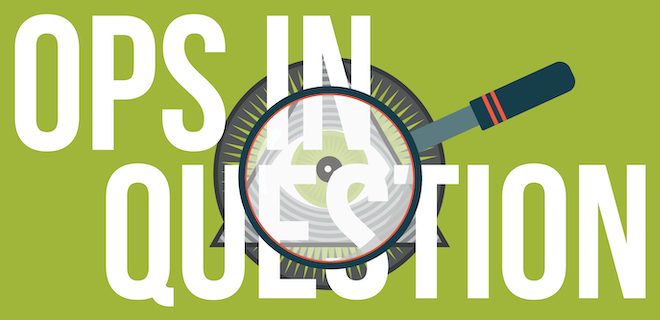
DoubleVerify launched a solution to enable advertisers to monitor and avoid ‘Made for Advertising’ (MFA) sites. We chatted with their Chief Product Officer, Jack Smith, to take a deep dive into MFAs and learn more about their solution.
Back in June, the ANA sent shockwaves through the industry when it said that Made for Advertising (MFA) websites represented 21% of impressions and 15% of all ad spend. What’s more, the ANA said these sites were often the worst of the worst, rife with disinformation, conspiracy theories, and spammy links. To eliminate that waste, the ANA advised advertisers to “demand” MFA websites be eliminated from their plans, unless, of course, they wanted to reach consumers in those environments.
It’s good advice, but how should the industry go about assessing what constitutes a scam-filled website espousing conspiracy theories, from, say, a crafting website that happens to be loaded with ads?
To find out, we spoke with Jack Smith, Chief Product Officer at DoubleVerify. It’s a topic his company has given quite a bit of thought to and has practical advice for advertisers.
AdMonsters: Let’s start with the basics, what is an MFA site exactly?
Jack Smith: These are sites that are often generated from a template, which means they all look the same. They also have a high density of ads, and their whole purpose for existing is to generate ad revenue for the site owner. This is prompting advertisers to ask if there is any value for them to advertise on MFA sites, and if not, how can they eliminate them from their campaigns.
AdMonsters: The ANA states that MFA sites “usually” have low-quality content, which implies that there are some that don’t. Should we assume that all MFA sites are bad?
JS: Obviously sites with misinformation and poor content are problematic, but there are some ad-heavy sites that may attract the audiences some advertisers want to reach. The important thing is to give the advertiser transparency and control so that they can make smart decisions about brand suitability.
AdMonsters: How do you distinguish between an MFA site that offers no value to the consumer and one that does?
JS: When we started thinking about this, we wanted to find a way to quantify the parameters that apply to what we think of as MFA sites. What are the specific characteristics and sub-characteristics of an MFA site, and then how can we quantify them?
Our thinking is that if we can identify the characteristics, and quantify them, marketers can then make decisions whether to include or exclude sites based on those quantified attributes. We’ve seen recipe sites that have a very high density of ads, but the recipes themselves are quality content that attract users. Some advertisers may be comfortable with those placements.
From our perspective, it’s the advertiser’s decision where to put their media. Our role is to provide them with the level of transparency they need into those placements so that they can decide what’s right for their brand.
AdMonsters: What are the characteristics that, to you, indicate a site is an MFA?
JS: Ad density is pretty important. So is traffic, which we can quantify because we can see the traffic that leads to these sites. Is the site generating revenue off of the back of paid traffic? Are they buying social media campaigns and sending traffic to their sites from these channels?
We also look at the sites themselves to see if they’re built using templates, and if their content is the product of generative AI.
These are the kinds of characteristics we use to determine if a site has the characteristics of an MFA-specific site.
AdMonsters: Can DoubleVerify tell if a site’s content was generated for ChatGPT?
JS: Anyone who tells you they can identify generative AI content with 100% certainty is lying to you. That said, there are characteristics that indicate content may be AI generated.
But it’s not just the generative AI piece. We see the same template used over and over again across MFA sites, and often the same content is replicated over and over again as well. That’s a key indication.
I want to make clear that there’s nothing inherently wrong with content that is generated by AI. Machine-generated content can be very valuable to a consumer. But the presence of AI-generated content appearing on multiple sites that look the same are signals that these sites are made for advertising, and advertisers need to be aware of that fact so they can make brand suitability decisions.
AdMonsters: How does DoubleVerify inform advertisers about these characteristics?
JS: We provide reports that contain the parameters or characteristics of what we consider MFA sites. Is there a high density of ads, how much of their traffic is paid? We can also provide a mechanism that allows them to avoid those sites if they want, or select which sites to avoid and which sites to run on.
AdMonsters: Have you seen instances where an advertiser received a report and discovered that an MFA-classified site actually delivers strong performance?
JS: That’s an interesting question and one that isn’t asked enough. We don’t necessarily see the outcomes our clients are measuring towards, and we don’t want to tell advertisers that they should block all MFA sites, or sites that have one or two characteristics of an MFA site.
We can’t presume to know every outcome. I mentioned earlier that we’ve seen cooking sites with quality recipes and a high-density of ads. An advertiser may want to place ads on that site because the readers are highly engaged with the content. It’s important to provide transparency and control so that advertisers can optimize their campaigns and direct their media towards sites that deliver performance, even if it’s a site that has one or two characteristics of an MFA.
AdMonsters: So what you’re saying is that the MFA story may be a little bit more nuanced than the advertising community initially thought?
JS: It is, but to understand those nuances, advertisers need transparency and control.